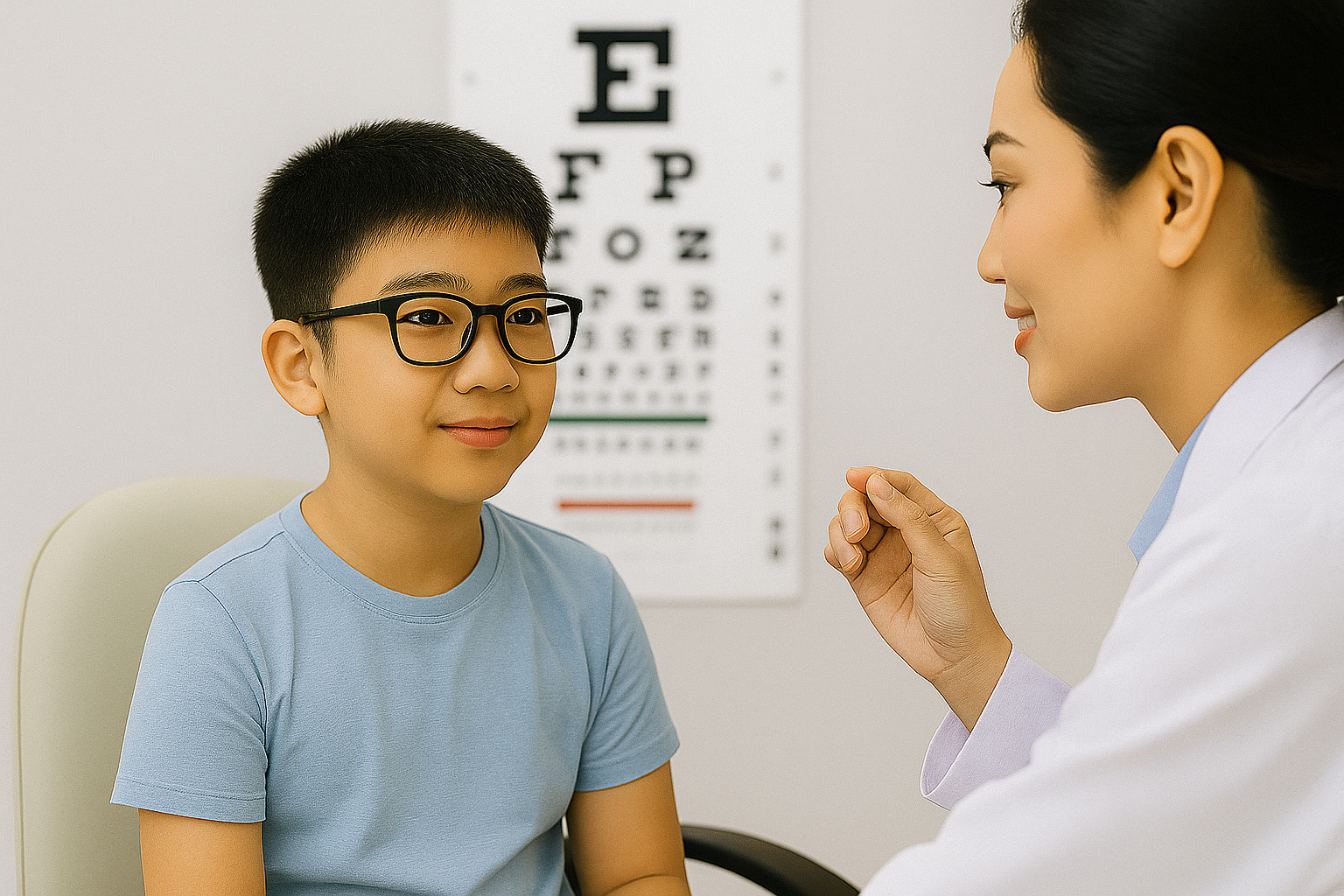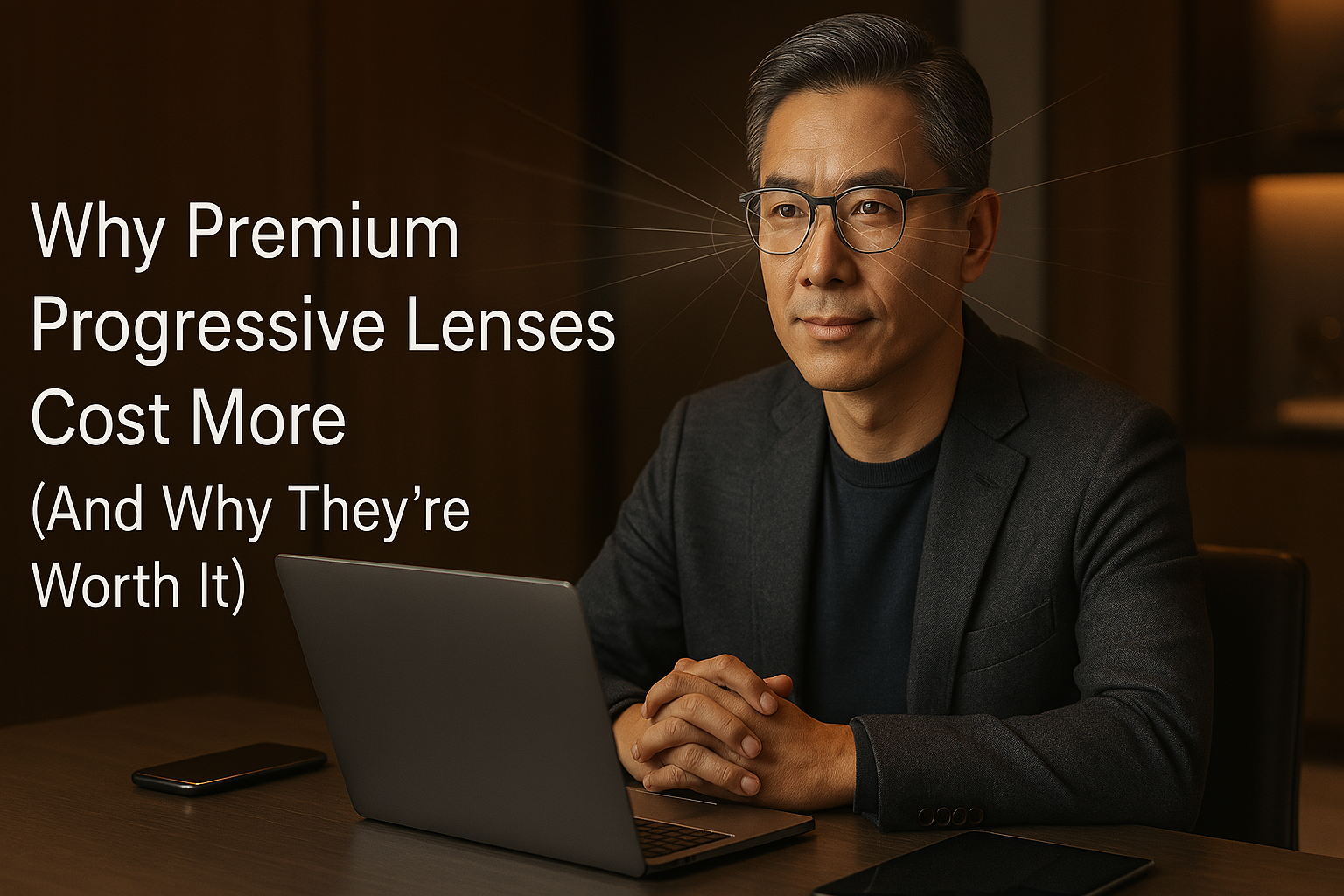Where Advanced clinical expertise meets craftsmanship in every lens.

As a Malay optometrist descent practicing in Singapore, the health of our community's vision is of paramount importance to me. I've witnessed the debilitating effects of eye diseases within our community, and today, I seek to shed light on these conditions and offer preventive steps.
Eye Diseases Among the Malay Community: The Facts
A significant portion of the Malay community in Singapore is at risk of various eye diseases. Research has particularly highlighted the prevalence of these conditions among Malay adults, stressing the pressing nature of this issue[1]

Key Eye conditions to Be Aware Of:
Before we talk about eye conditions, let me first show you a picture of the back of the eyes, that we aim to take with each of our patient. This fundus photo captures the back of our eye, showing the health of our retina, optic disc, and blood vessels; these structures are vital for vision, and this image shows they are clear and healthy, free of any abnormalities or pathological changes.

Below is how fundus of patients with different eye conditions will look like:




The changes in early eye conditions maybe subtle and often time patients may not even know that their eye health has change. Early detection will allow early care and can help in preserving vision.
How Can We Safeguard Our Vision?:
- Regular Eye Exams: Especially for older individuals, annual eye checks can lead to early disease detection and prevention.
- Stay Informed: Understand the symptoms and risk factors of these diseases.
- Adopt Healthy Lifestyle Choices: This includes proper nutrition, wearing protective eyewear, and managing health conditions like diabetes.
Optometrists' Role:
We are trained to conduct comprehensive eye exams, diagnose vision problems, prescribe corrective lenses, and offer guidance on eye care. Think of us as the first defense line against eye diseases.
What you should do:
Let's prioritize our eye health. With regular check-ups, awareness, and a healthy lifestyle, we can combat these eye diseases. As an optometrist, my commitment is to ensure that our community is well-equipped with the knowledge and tools to make informed decisions about their vision. Book your family in for their annual comprehensive eye exam.
Protect your Eyes, Value your Vision.

By Shahirah Sulaiman
Optometrist @ Eyecare People
Comments will be approved before showing up.

Late-night homework, endless tuition, and hours of gaming — today’s screen-heavy lifestyle can quietly speed up your child’s myopia. Learn how regular 3-monthly eye reviews, tailored myopia control treatments, and professional guidance can slow progression, protect long-term eye health, and help kids build healthy vision habits for life.

Think your progressive lenses shouldn’t cost more than your phone or laptop? Think again. Premium progressive lenses are precision-engineered tools tailored to your exact vision, lifestyle, and frame — using cutting-edge technology that rivals any modern device. In this article, we break down why these lenses come with a higher price tag, and why they’re worth every cent for daily comfort, clarity, and performance.

Worried your child’s myopia keeps getting worse each year despite wearing glasses? Discover how myopia control lenses like MiYOSMART, Stellest, and ZEISS MyoCare—available in Singapore—can help slow progression and protect long-term vision. Learn how to choose the right option for your child, based on clinical evidence and expert guidance.